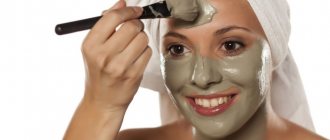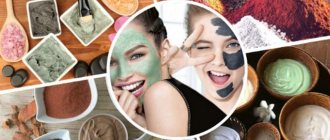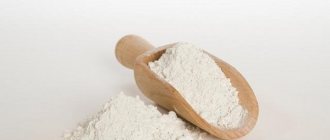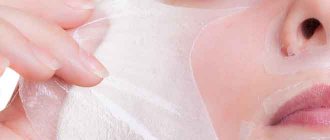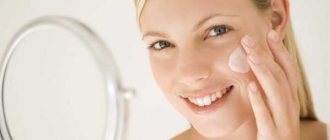Cosmetic clay as a cosmetic product has been known to the world for quite a long time. It is known to have antibacterial, anti-inflammatory and detox properties. In this article we will tell you about cosmetic clay: how to use, basic properties, composition, and so on.
On the shelves of ordinary stores it is very easy to find cosmetic clay of any color, either as a mono product or as one of the components in cosmetics. Depending on the color of the clay, its properties differ, but we will talk about this below.
Special composition of cosmetic clay
Despite the fact that the clay varies in color, the composition is practically the same. Here's what you can find:
- The most important substance is silicon oxide. It can restore injured blood vessels, improve collagen production and stimulate the regeneration process;
- Aluminum - dries out the skin (an excellent product for those with oily or combination skin types). Green, white and red clays contain the most of it;
- Manganese - it is thanks to it that clay works as an antiseptic;
- Magnesium - helps start the process of skin regeneration and rejuvenation;
- Copper - thanks to it, the production of keratin is stimulated, which is very important for rejuvenation and “glow”. It also protects the skin from the harmful effects of the environment;
- Zinc – protection against various harmful bacteria and cell rejuvenation;
- Other components - iron, phosphorus, nitrogen and others nourish the skin with important substances.
What else should you consider?
PAYOT, Cleansing and mattifying mask PATE GRISE – 2,699 RUR, Elizavecca, Cleansing clay-bubble mask – 1,150 RUR, Sativa, Gommage mask for cleansing pores No. 111 – 150 RUR.
Like any other mask, the clay mask is applied exclusively to cleansed skin. True, preliminary peeling is not necessary - most clay-based products have an exfoliating effect and do an excellent job of cleaning pores without outside help. Therefore, a gentle two-step cleansing and makeup removal is quite enough.
It is better not to use such a mask in the area around the eyes: here the skin is very delicate, even gentle pink or red clay may seem too aggressive to it. Since a clay mask has high occlusive properties (that is, it adheres tightly to the skin, prevents moisture evaporation and promotes deeper penetration of all components), it is a good idea to apply your favorite serum under it - this is both additional protection against dehydration and the ability to provide comprehensive skin care.
If everything is clear with clay masks, then problems may arise with their closest relatives - alginate ones. Therefore, read How to properly apply an alginate mask at home for the best effect
How to use cosmetic clay: let's talk about the properties
Clay has a lot of important advantages, unique and inimitable. Namely:
- Cleansing - it penetrates deep into the skin through the pores, removes excess sebum (sebum), impurities and dust;
- Regulation - the activity of the sebaceous glands decreases, the production of sebum is normalized;
- Moisturizing - the skin after clay masks is velvety, even and smooth. Important: you should not let the clay dry out on your face (lighten and harden), otherwise, instead of moisturizing and nourishing, it will draw all the moisture from the skin. There is a solution: either spray your face with tonic periodically, or apply a very thick layer);
- Calming effect - relieves inflammation, eliminates irritation. Provided that you are not allergic to the components of the composition;
- The most important thing is the absence of age and other restrictions. It doesn't matter what skin type you have or how old you are. From adolescence to old age, you can safely use cosmetic clay for the face and body.
Indications/conditions for use
Cosmetic clay is a universal component for creating masks. Depending on the type and additional ingredients, it can be used for any skin type, condition, and age.
Recommendations for use:
- problematic and oily skin;
- the presence of acne, pimples and other cosmetic problems;
- pronounced greasy shine;
- redness or irritation, increased sensitivity;
- consequences of tanning and prolonged exposure to the sun;
- the appearance of the first signs of withering and aging of the skin.
Regular use of clay masks for facial skin improves the natural color, normalizes metabolic processes and the secretion of subcutaneous sebum, and also eliminates pollution and toxins even in the deep layers of the epidermis.
Cosmetic clay: sorted by color
As described above, clay varies greatly in color, slightly in properties and composition. There are several colors: white, blue, yellow, green, red and black. Let's start in order:
- White clay or kaolin: whitening and smoothing out unevenness. The most easily accessible and famous. White cosmetic clay will help with almost all skin problems: acne, flaking, redness, inflammation, and so on. It is easy to find in many formulations of skin and body care cosmetics. After using white cosmetic clay, sebum production is reduced, excess oily shine is removed, acne dries out and facial wrinkles are smoothed out. Moreover, kaolin can be used as a scrub or peel if you want to gently and gently remove dead skin cells;
- Blue clay: healing and drying. No less popular than white and is considered top due to the presence of many vitamins, minerals and microelements. Especially cadmium and cobalt. It is recommended for those with oily and combination skin types to use blue cosmetic clay for the face - acne and blackheads disappear over time. The complexion is refreshed, the skin becomes smooth, clean and radiant. A big bonus is the stimulation of blood circulation, which helps fight cellulite, stretch marks and inflammation;
- Yellow clay: freshness and tone. It contains sodium and sulfur, so it is perfect for dull and “sad” skin of the face or body - it’s a good oxygen shock. The effect is cumulative, but the first results will be visible after just a few uses - the skin will brighten, glow, look healthy and rested. If you have areas on your body with rough or dead skin (elbows, heels), you can apply yellow clay to them to soften, moisturize and exfoliate. It is also an excellent remedy for regulating foot sweating and eliminating unpleasant odor. You can make foot masks to exfoliate the skin on the heels, remove the stratum corneum and unpleasant odor;
- Green clay: relaxation and calm. The composition includes copper and iron oxide - hence the color. These components help stimulate blood circulation, which leads to a pleasant glow on the skin and gradual rejuvenation. Green cosmetic is recommended for use if you have dermatitis or oily skin (in the first case, be sure to consult your doctor!). It's great to take baths with green clay before bed - very relaxing and calming;
- Red clay: warming and healing. It has this color due to a lot of copper, potassium and iron oxide. The skin is very well saturated with oxygen, blood circulation improves. As a result, the elasticity and firmness of the skin increases. Red clay warms up the skin, so it is good to use red cosmetic clay in the cold season to avoid chapping and dehydration. For dry, sensitive or dehydrated skin, red clay is a real gift. Redness, itching, peeling and dryness disappear in a short period of time if masks are used regularly;
- Black clay: cleansing and protection. In its composition you can find magnesium, manganese, quartz, iron and many, many other benefits. Many of them perfectly cleanse the skin and remove dirt and toxins from it. In addition to them, the use of black cosmetic clay helps smooth cellulite and reduce fat. In many salons and beauty parlors, it is used as an anti-cellulite agent for body wraps, massages and other manipulations to reduce centimeters in girth in various places. In addition to all of the above, subcutaneous and intracellular metabolic processes are accelerated. As a result, the skin is not only nourished and moisturized, but also protected from the harmful effects of the environment.
Yellow
Yellow clay is universal: it is suitable for absolutely all skin types. But its features don’t end there.
It has been repeatedly noted that the use of cosmetics based on it is accompanied by relaxation of not only the facial muscles, but also the entire body as a whole. The effect is comparable to spa treatments that relax and calm.
The beneficial properties of clay for the face are not much different from other varieties: white, blue, black, green, pink and red. But yellow clay more strongly than others activates the flow of oxygen-enriched blood to the skin cells of the face, so it is from its use that the color of the dermis is transformed after the first use.
Cosmetic clay: how to use for face and body
Making a clay mask couldn't be easier! You just need to mix the clay with water and you're done. You can mix the powder with anything:
- Warm water;
- Mineral water;
- Milk or cream;
- Green or black tea;
- A decoction of herbs and so on.
It is better to use glassware or, in extreme cases, plastic. It is better to avoid metal clay, since clay loses many important and useful substances in it. The consistency should be like sour cream (20-25%), such a density is very convenient to apply to the skin - it does not flow or drip.
Rules for applying masks
To achieve lasting and pronounced results from using a homemade mask, it is important not only to correctly select the type of cosmetic clay and ingredients, but also to prepare and use the product correctly. Basic rules of application:
- To dilute the clay, it is advisable to use slightly chilled mineral water without gas; after mixing, you should get a homogeneous mixture, similar in consistency to thick sour cream.
- All clay masks should be prepared only in a glass or plastic container, avoiding metal utensils.
- Do not apply the product to the area around the eyes and mouth, as the skin in this area is especially delicate and sensitive.
- Before applying the product, you need to wash your face well and remove your makeup. To enhance the effect, it is recommended to pre-steam your face.
- During the procedure, it is recommended to take a convenient and comfortable position, avoid sudden movements and activity.
- Clay should be selected depending on the problem being solved and skin type; before the first use, it is advisable to check the skin’s reaction to the components.
- The duration of the procedure and the regularity of using homemade masks depend on the type and condition of the skin, as well as the composition of the product.
The finished composition for a homemade mask cannot be stored for longer than 12-18 hours; only fresh products should be used. It is best to prepare a small amount for single use.
Before using cosmetic clay, you need to check the expiration date and quality of the material. It should be in the form of a powder with a characteristic color and no odor.
Cosmetic clay: how to use
Despite the simplicity of “preparing” a clay mask, for maximum effectiveness it is better to follow a certain algorithm of actions:
- Cleanse the skin of cosmetic residues with foam or another similar product;
- Treat with scrub or peeling (only gently so as not to injure the skin);
- Even better is to steam the skin for about 15 minutes. The better the cleansing, the brighter the effect of the mask will be;
- Dilute the powder with the liquid to the consistency of sour cream;
- Stir thoroughly, there should be no lumps or air bubbles;
- Apply the mixture to the skin in an even layer;
- Leave for about 15 minutes, but do not let the clay dry out! Spray your face with tonic or plain warm water from time to time;
- After the time has passed, rinse off the mask with warm water and pat your face dry with a paper towel;
- Apply a light moisturizer to seal the result.
Now you know how to use cosmetic clay for your face and body. This is a great beauty product because it is easy to find, cheap and very effective. Several colors can be mixed with each other and they will retain their benefits! The effect is cumulative, make masks from cosmetic clay several times a week and the results will not be long in coming!
White (Kaolin)
Great for oily skin, fights fine wrinkles, saturates with microelements, helps to become more elastic, the hair mask nourishes the scalp, stimulating growth.
- Ingredients: calcium, silicon, magnesium, zinc.
- Property: Possesses dry, germ-killing, naturally absorbent properties,
- Purpose: Acne, oily face, hair loss, baldness, split ends and dandruff, cellulite, dysbacteriosis.
Face mask with clay:
Red
Most often used for dry, allergy-prone skin.
- Composition: iron, copper, silicon, potassium, magnesium, aluminum.
- Property: corrects the secretion of the sebaceous glands, acts against microbes, regenerates damaged skin, removes toxic substances from the body - radionuclides, toxins, waste. Most often used for dry, allergy-prone epidermis.
- Purpose: varicose veins, hair loss, dandruff, epidermal diseases, greasiness of the face or head, swelling of the legs, cellulite.
Black (Bentonite)
Referred to as Montmorillonite, the natural clay mineral is of volcanic origin. Bentonite forms a gel when mixed with liquid.
- Composition: iron, magnesium, calcium, quartz, potassium, strontium, radium.
- Properties: cleansing, regenerating, anti-inflammatory, antiseptic, tightens pores, heals minor wounds, eliminates irritation.
- Purpose: relieves acne, pimples, blackheads, oily skin, enlarged pores, premature aging, skin aging, cellulite.
Contraindications
Clay is a natural substance and there are no contraindications for use. An exception may be an allergic reaction to any component.
Follow the recommendations:
- You should not use clay on the skin around the eyes - clay will tighten and dry out the thin skin of this area, promoting the formation of wrinkles.
- The face must be clean before applying the mask. Cleansing will help to cleanse the skin, and a refreshing tonic and face cream will complete the care procedure.
Pink (French)
A combination of white and red clay, soft and soothing. This is a really great ingredient for sensitive skin that you can use in face masks.
- Composition: iron, copper, silicon, potassium, magnesium, aluminum, calcium, silicon, magnesium, zinc.
- Property: gently cleanses sensitive skin, relieves fatigue and irritation, improves blood circulation, activates metabolic and regenerative processes, solves problems of enlarged pores.
- Purpose: clogged pores, acne, oily face, skin diseases.
Green
Green clay is one of the drier clays, making it good for oily skin. It is also the best absorber of impurities, dust, oil, toxins and makeup - which is why you will see it in many spas.
- Composition: silicon, potassium, molybdenum, silver, cobalt, copper, zinc.
- Property: corrects the functioning of the sebaceous glands, is a rejuvenating agent for both the skin and the whole body. Removes toxic toxins and waste, improves metabolic balance in the body.
- Purpose: problematic hair - thinning, fragility, hair loss, dandruff, acne on the face, clogged pores, pimples, loss of skin tone - sagging, sagging.


